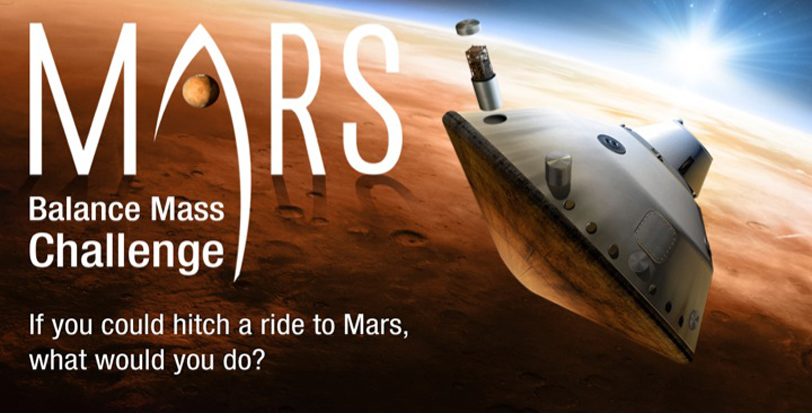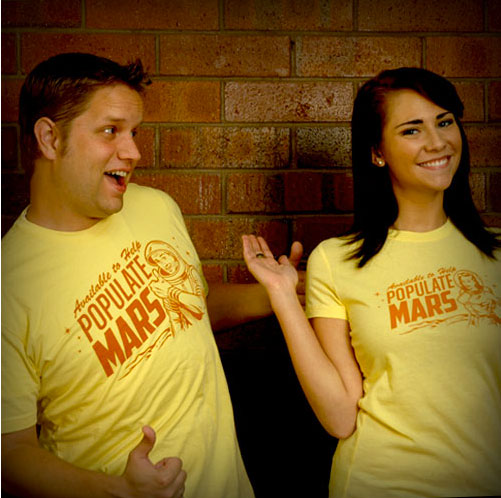NASA Challenges Public to Design Piece of Mars Spacecraft

NEW YORK — NASA has challenged the public to design part of a spacecraft that could land future spaceflyers on the surface of Mars.
The so-called NASA Mars Balance Mass Challenge officially opened Saturday, and will draw to a close on Nov. 21. The agency will announce the winning design in January 2015, and the winner will receive a grand prize of $20,000.
Humanity has had its eyes set on Mars since the 1960s. In the 1970s, NASA began landing spacecraft on Mars, and in the 1990s, wheeled robots started exploring the surface. In 2012, NASA's Curiosity rover touched down on the Red Planet in spectacular fashion.
But now, the agency is looking ahead to future manned missons crewed by the first "Marsonauts."
"Now it's time to send humans," David Miller, NASA chief technologist, said in a presentation here Saturday (Sept. 20) at the World Maker Faire. [The Boldest Mars Missions in History]
But landing a spacecraft on Mars is no small feat. The Curiosity rover needed to be perfectly balanced when it was hurtling toward the Red Planet in 2012. But when it approached the Martian atmosphere, the craft ejected two 154-pound (70 kilograms) weights. This disrupted the spacecraft's balance, which helped it slow down as it slipped into the alien atmosphere. But just before it landed, the spacecraft released six other 55-pound (25 kg) weights to rebalance the craft so that it could land safely.
This meticulous balancing act is complicated, and that's where the public comes in, Miller said. NASA is challenging the public to design balancing weights that are up to 330 lbs. (150 kg) that can serve a dual purpose. In addition to helping keep the spacecraft balanced, NASA scientists want the weights to double as scientific instruments to collect data and take measurements of the Red Planet.
Get the Space.com Newsletter
Breaking space news, the latest updates on rocket launches, skywatching events and more!
There are also a lot of technical problems to sort out, Miller said. NASA scientists and engineers are developing laser technology for communication. Lasers can send more data than radio waves and can transmit information faster. This could improve communication between Earth and Mars, Miller said.

NASA and other commercial spaceflight companies are also working on designing lighter rockets that are capable of carrying heavier payloads. This is useful because "we'll need to bring a lot of stuff with us" if humans set up long-term settlements on Mars, Miller said.
NASA's exhibit at the World Maker Faire included information on other ways citizens can get involved with the agency's missions, including how to launch miniature satellites called CubeSats into space, and how to participate in the Asteroid Grand Challenge, which involves identifying asteroids that could hit Earth, and brainstorming ways to divert them. A list of all current NASA challenges are available on the NASASolve website.
To learn more about NASA's Mars Balance Mass Challenge, visit: http://www.nasa.gov/solve/marsbalancechallenge/.
Follow Kelly Dickerson on Twitter. Follow us @Spacedotcom, Facebook or Google+. Originally published on Space.com.
Join our Space Forums to keep talking space on the latest missions, night sky and more! And if you have a news tip, correction or comment, let us know at: community@space.com.

Kelly Dickerson is a staff writer for Live Science and Space.com. She regularly writes about physics, astronomy and environmental issues, as well as general science topics. Kelly is working on a Master of Arts degree at the City University of New York Graduate School of Journalism, and has a Bachelor of Science degree and Bachelor of Arts degree from Berry College. Kelly was a competitive swimmer for 13 years, and dabbles in skimboarding and long-distance running.









